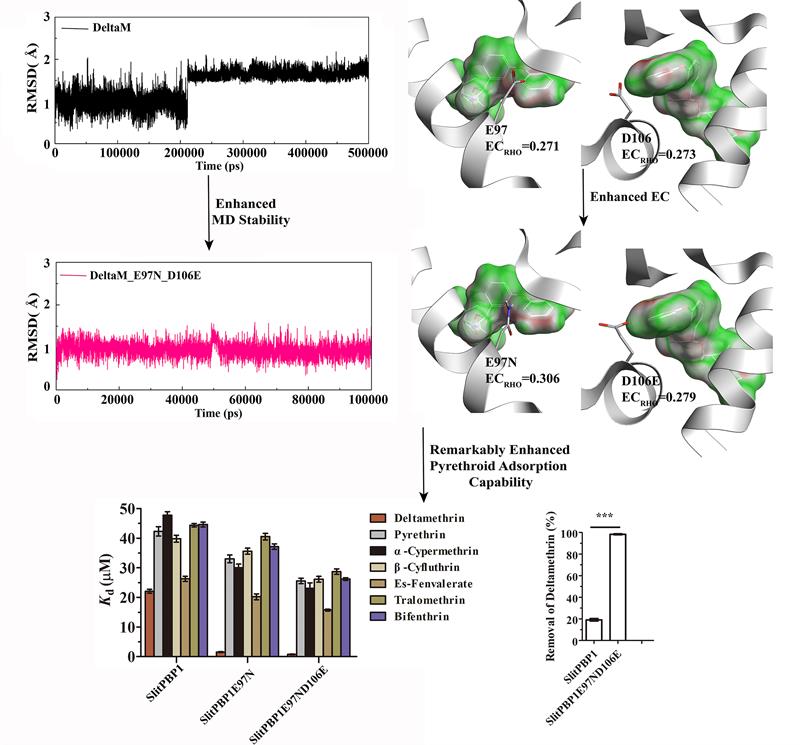Recently, the AI-Based Plant Protection Research Team from our college published a research paper titled "High-efficiency removal of pyrethroids using a redesigned odorant binding protein" in the Journal of Hazardous Materials. This study proposed a new and efficient protein rational design strategy by directed increasing the binding ability of the target protein SlitPBP1 to pyrethroid insecticides, providing new technical support for the research and development of biological macromolecular drugs such as proteins. Dr. Liu Jiyuan is the first author of this paper. Professor Zhang Yalin and Associate Professor Tian Zhen, are the corresponding authors. The young faculty, Dr. Li Yifan, and doctoral student, Wang Pei, participated in the research work.
Proteins have a wide range of applications in many industries such as agriculture and medicine. However, natural proteins often have poor properties (such as low stability and low activity), so they need to be rationally designed to overcome their own defects. This study constructed a protein rational design strategy based on electrostatic potential complementarity (EC) and molecular dynamics workflow (MD-based workflow). This strategy, focusing on the interaction characteristics of proteins and ligands, uses EC and MD technologies to accurately locate the amino acid residues that need to be mutated in the target protein, and rationally screens for beneficial mutations to achieve rapid accumulation of beneficial mutations in the target protein. The modified SlitPBP1 protein (SlitPBP1E97ND106E) significantly improves its binding ability to pyrethroids, and its binding ability to deltamethrin even reaches the nanomolar level. Compared with commonly used protein design strategies such as directed evolution and machine learning, this strategy avoids the blindness of residue mutations and does not rely on the large amount of protein sequence-function information required for machine learning. It has advantages such as simplicity, efficiency, and wide applicability, and can be used for precise targeted design and optimization of biological macromolecular drugs such as proteins.

Figure 1. Rational protein design strategy
This study further explored the application potential of rational designed SlitPBP1 in pyrethroid pollutant treatment, and proposed a new pyrethroids efficient adsorption treatment technology based on SlitPBP1E97ND106E. After immobilizing SlitPBP1E97ND106E on a solid support surface, it showed efficient adsorption capacity (adsorption rate > 90%) for pyrethroids in different water environments, with the highest adsorption rate reaching 99.35%. This technology has much better removal capacity for pyrethroids in the environment and adaptability to environmental conditions than currently used technologies such as biodegradation, and has the potential for further promotion and application.

Figure 2. Directional rational design of SlitPBP1
This study was supported by grants from the National Natural Science Foundation of China, the Basic Scientific Research Business Expenses of Central Colleges, and others.
Original link: https://doi.org/10.1016/j.jhazmat.2023.132856